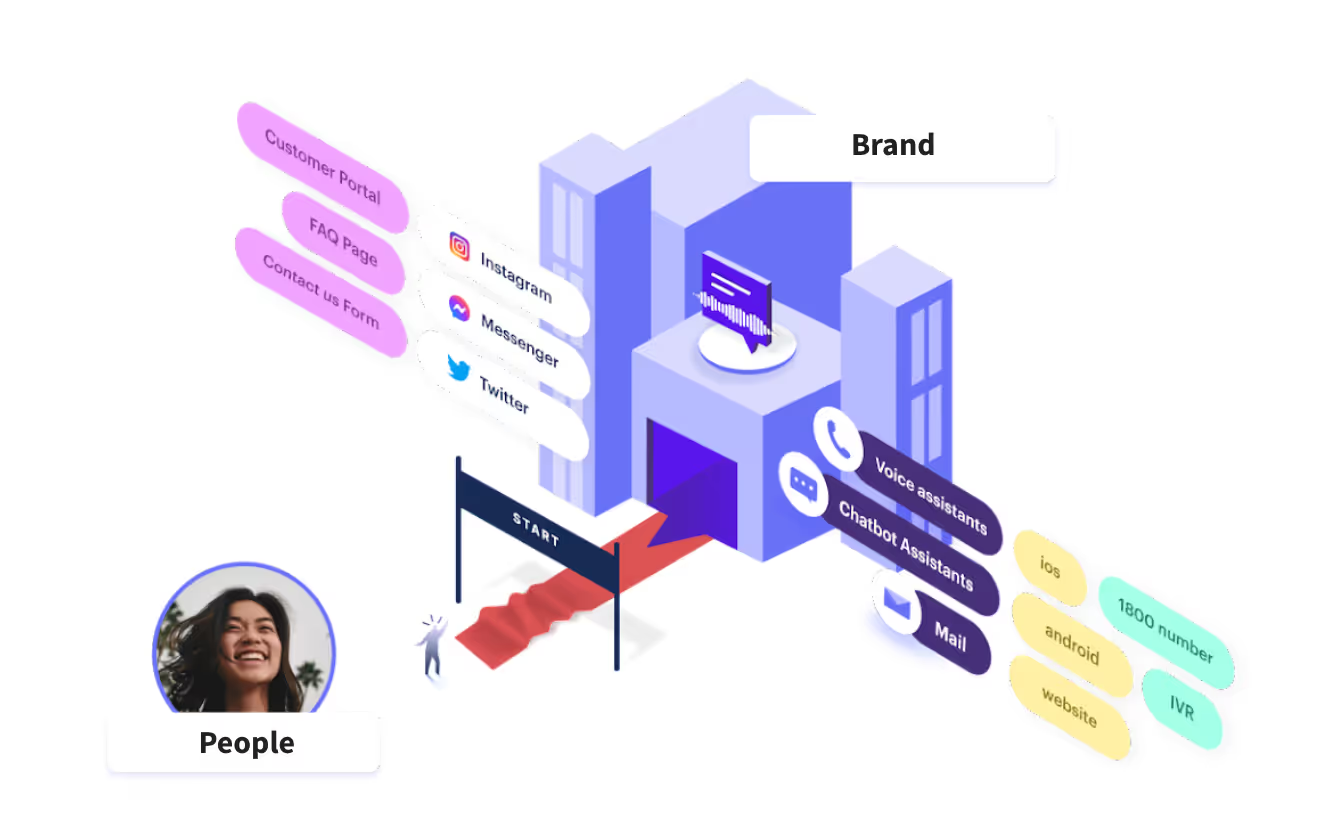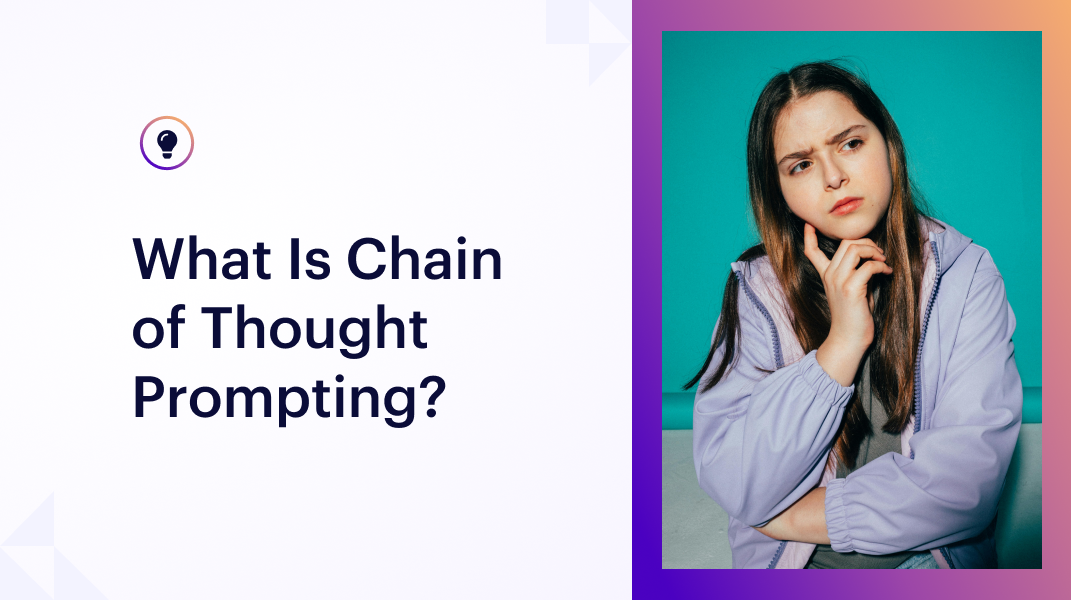I moved into a new apartment recently and wanted to update my home insurance. Google brought me to an FAQ page that had the answer. Apparently, I can update my address in their customer portal. Great! I followed the link, and tried to reset my password, but it went to an old email address. I picked up the phone, and after navigating the IVR for about 5 minutes, I managed to connect with a human agent who was finally able to help me.
Today, getting what you want from a brand feels like trying to find your way through a maze. First, customers have to pick the starting point: an FAQ page, 1800 number, mobile app, customer portal, contact form, social media, etc. More often than not, their first pick isn’t the right one. So instead they try to find the fastest route to talk to a real human. Either that, or they give up and take their business elsewhere. This isn't just cumbersome for customers, but very costly for brands.

Over the last 6 years, many brands have created chatbots and voicebots for all sorts of customer-facing use cases. Best-in-class assistants allow customers to express what they want in their own words and be understood. However, the vast majority haven’t lived up to these expectations. To fix this, we started Rasa. After partnering with some of the best teams in the world over the last years, it’s clear that better bot technology is not enough. In the worst case, bots just add one more path in the maze, or add automation to a process that is fundamentally broken. We need a new paradigm in customer experience and engagement that is lived across the whole organization. It’s not a bot, it’s your brand.
Transforming how brands interact with people
In today’s world, customers are unwilling to put up with your maze. The change is driven by three long-term trends. First, instant-everything expectation means that nobody wants to wait for anything and expects an experience tailored to themselves. Second, software is eating the world which requires every company to embrace digital transformation and a product mindset. Lastly, automation and AI are starting to eat software, with massive business opportunities through step-function improvements in the technology like generative models (think BERT / chatGPT) but also risks of being disrupted by AI-first competitors.
Going back to my own recent experience, updating my address was a pretty straightforward request, but I spent a frustrating amount of time navigating my insurance company’s maze. I wish I could have just said what I needed and my request would have been resolved. This would have certainly improved my perception of the brand.
We believe that in the future, winning brands will adapt to each individual customer based on their needs and context with state-of-the-art AI assistants, delivering instant, unique, and omnichannel experiences:
- Instant: Waiting times are a thing of the past. Customers will get immediate help either through full automation or by quickly routing to a human agent. Automation rates will steadily increase over time as conversational AI becomes more powerful.
- Unique: Experiences can be unique from two perspectives. First, the brand can tailor the experience to the needs and context of each individual customer by allowing them to explain what they need in their own words, and pulling in customer data from all lines of business. Second, you can position your brand in the way you want and follow industry best practices to interact in different ways with various customer segments. For example, you might want to interact differently with new customers compared to existing ones.
- Omnichannel: Before, customer experiences could vary a lot based on the channel - you might get a swift response from an airline on Twitter, while you would have waited for 3 hours on the phone. Your brand will now be able to meet your customers where they are, available 24/7 on every channel and switching seamlessly between them.

We call this Adaptive Brand Experiences. It’s the new paradigm in customer experience and engagement. It changes the game for your brand and your customers with elevated customer satisfaction, improved brand loyalty and high return on investment. Over the last 4 years, step-function improvements in AI, machine learning, and natural language processing (NLP) provided the technological foundation to ‘hide’ all the complexity of a large brand behind a single AI assistant - either a text box or a phone number, or both - wherever your customers want to interact with you. This technology is ready for enterprises to adopt, so what are brands waiting for?
The journey to build Adaptive Brand Experiences
Brands follow a pretty consistent pattern before getting to Adaptive Brand Experiences. After exploring a first set of use cases, most brands introduced chatbots, voice assistants, and automation in their contact centers. These tactical implementations deliver real ROI for the brands, but from a customer’s perspective, they tend to just add more paths to the maze. In fact, ‘connect me with a human’ has been one of the most common interactions with conversational AI to date.

So how do you get to stage 3? It boils down to the right strategy, mindset and platform. We’re fortunate to be partnering with pioneers implementing Adaptive Brand Experiences that - instead of a tactical - take a holistic, strategic approach, based on two core principles:
- Make customer experience a strategic priority: Pioneers view customer service as a profit as opposed to a cost center and the quality of their customer experience as a key differentiator in our digital-first world - from engaging to servicing customers. Customer experience for them has a C-level sponsor, making it a strategic initiative.
- Embrace a product-driven AI mindset: In the first stages of the journey, brands think of bots as one-off projects, usually leveraging off-the-shelf tools. Pioneers instead build customer experiences that are substantially differentiated from their competition. They have a product-driven mindset which allows them to fully control the customer experience end-to-end and improve it over time leveraging conversation-driven development.
Based on the two principles, we see pioneers form new multidisciplinary teams dedicated to creating Adaptive Brand Experiences with a powerful open and extensible platform, moving essential skills and talent in-house. This gives them the strategic edge over other players in their industry in the upcoming AI race.
Building the future of brand experiences today
Customers are demanding instant, unique and omnichannel experiences with brands. So it’s not a question of if but when Adaptive Brand Experiences will become the standard. The start of the pandemic in 2020 made this clearer than ever before. Overwhelmed by unprecedented digital traffic, brands - even in industries that were reluctant to come online - were forced to accelerate their digital transformation with tactical solutions and adding new paths to the existing maze. Now is the right time to take a step back and think about customer experience holistically.
When the App Store launched in 2008, few would have predicted that 15 years later, the majority of large brands had teams building and improving multiple different mobile apps in-house. Brands that quickly understood the new mobile-first paradigm won, while many others have fallen behind. We’ll look back at 2023 and will say the same about the new adaptive paradigm. This time though, it’s the last chance to leap-frog your competition. At Rasa, we’d love to partner with you on that journey. Get in touch!





